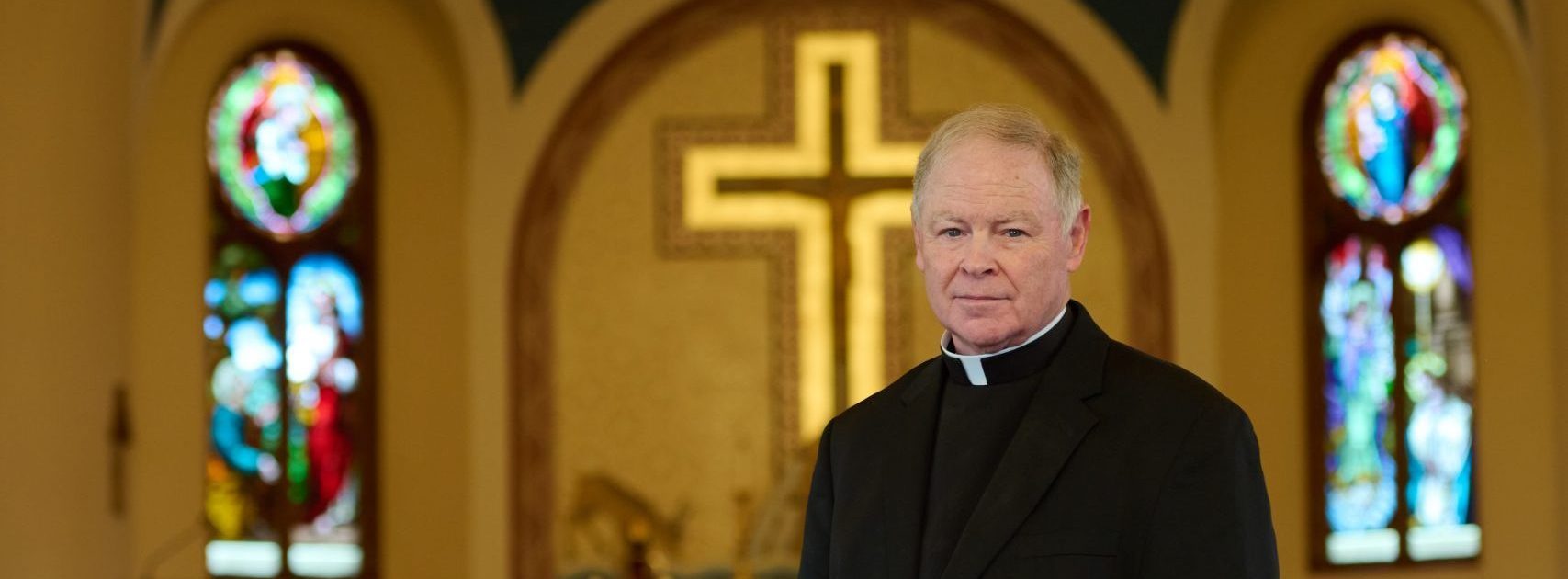Monsignor Michael Gorman, the rhythms of rural life and the rites of the Church
“Threshing Day” and Holy Thursday
There is a perhaps apocryphal story about Monsignor Michael Gorman, who grew up on a farm in the driftless area of southwestern Wisconsin. His mother, Susan Gorman, is said to have remarked, “Young Michael was only guaranteed to smile on two days each year: Holy Thursday and Threshing Day.”
Threshing Day was the fall day when the threshing machine was hauled to the farm and used to separate the harvested grain from the straw. For a young boy who loved to see complicated machinery in operation, threshing day was a magical experience. For an aspiring priest, threshing day served as a reminder of Christ separating the wheat from the chaff in the baptism of Holy Spirit and fire. (Mt 3:12) For a man who became our beloved pastor, teacher, administrator and confessor, that fascination for how things work guided him into a long, productive career as a servant to the bishops and priests of the Diocese of La Crosse.
Surrounded by Faith and Family
Monsignor Michael Gorman was born in 1954 and grew up on a 250-acre farm in Richland County, Wis., just east of Rolling Ground on Highway 171. It was a two-family farm, with his father’s family living in one house and his uncle’s family in the other. Together, the two families raised dairy cows and pigs, kept a team of horses until 1957, raised chickens when he was very young, and even tended sheep before his time.
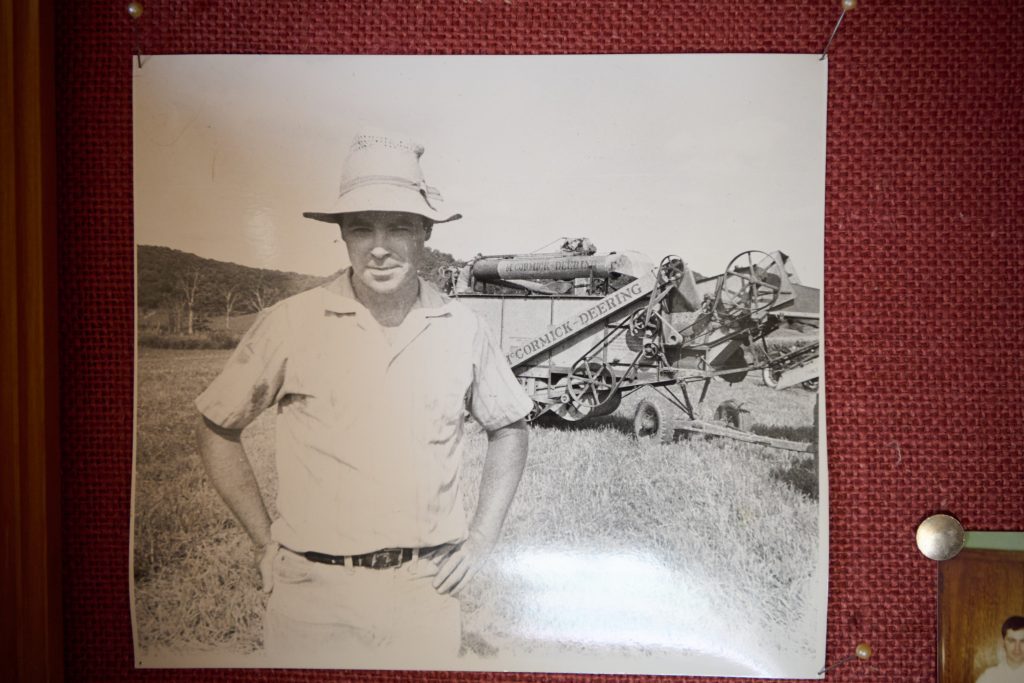
They also grew tobacco, which was very labor-intensive and required the help of seasonal workers. Monsignor’s two younger sisters were always around, but his uncle’s children, who were older than him, had left the farm when he was still young. However, they would often return to help with the tobacco harvest or haying.
But Monsignor Gorman was never a latchkey kid; there always seemed to be a parent, sibling, uncle, aunt or cousin around to keep an eye on him. He had the enviable experience of growing up in a world where he was constantly surrounded by family.
His family extended to nearly all the surrounding farms. His great-grandfather’s brother had arrived in Richland County in 1857 and tragically died of a ruptured appendix in 1888. He had many daughters and only one son, who left the area. His widow asked her brother-in-law, Monsignor’s great-grandfather, to bring his family over from Ireland to work the farm, which he did. Monsignor’s grandfather was the only son of nine children, and his great aunts eventually married locally and populated the surrounding area with relatives having a variety of different Irish last names. Monsignor Thomas E. O’Shaunessey, for example, a gifted orator in the diocese who died in 1978, was the grandson of a Gorman, his great-grandfather’s brother. Monsignor Gorman noted that he never met anyone who wasn’t either a relative or Catholic (usually both) until he went to school.
Growing up, there were always priests around. The family’s home parish was St. Philip Parish near Rolling Ground. Monsignor Gorman’s aunt, Catherine Gorman, became the housekeeper for Father Michael Mertens, who baptized Monsignor as an infant. She eventually followed Father Mertens to Viroqua and then to La Crosse when he was appointed chancellor, and for two years, she was the housekeeper for the Most Reverend Frederick Freking, bishop of La Crosse. Monsignor Gorman fondly remembers visiting his aunt at the bishop’s residence when he was a boy.
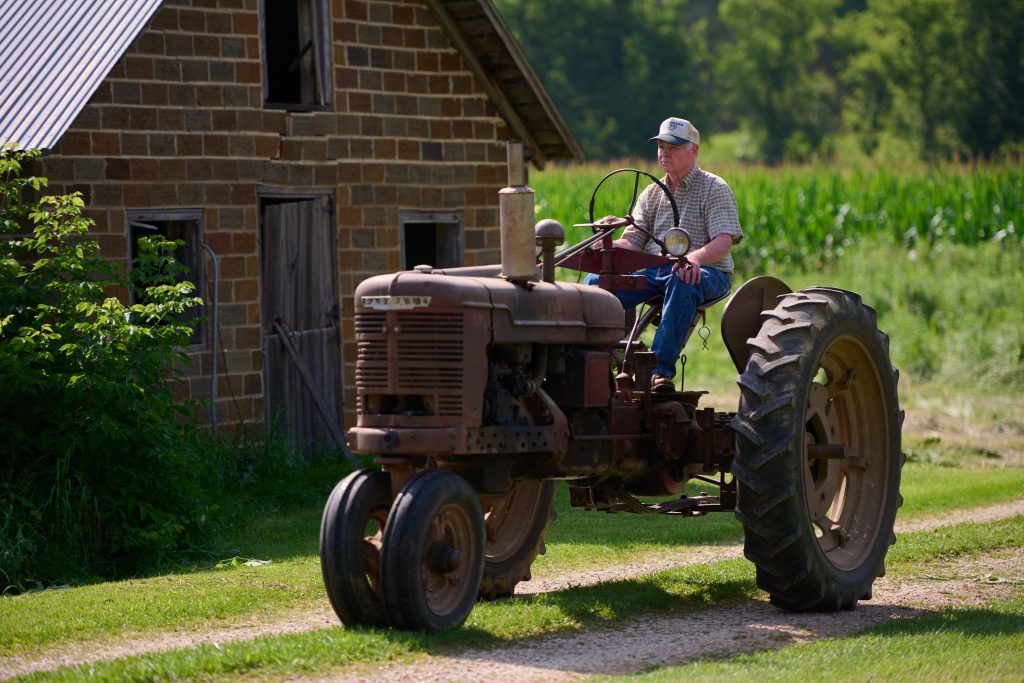
The pastor of St. Philip’s would come to the farm to bring Communion to his grandmother, who was homebound. She died when Monsignor Gorman was in the second grade. Parish priests, Brothers of St. Pius X and Benedictine Sisters would visit. There was nothing remarkable about seeing a priest, brother or sister seated at the dinner table.
Back then, religious education lasted for four hours on a Saturday. It was “serious business,” according to Monsignor Gorman, complete with report cards at the end of each term. The Brothers of St. Pius X taught the religion classes, although a priest taught the confirmation students. There were also two weeks of summer school, Monday through Friday all day. The parish had a Catholic school for a few years in the 1880s, but it couldn’t survive because those who attended either had to walk from home or board nearby. Monsignor attended Akan Central School, a new school built to replace five one-room country schools. He then went to Richland Center High School.
In the fifth grade, Monsignor Gorman began his training as an altar server. At that time, becoming an altar server involved learning Latin responses, and he became curious about why the word for God could be Deus, Dei, Deo or Deum. He eventually solved that riddle and went on to teach Latin for many years at both Aquinas High School and St. Mary’s University.
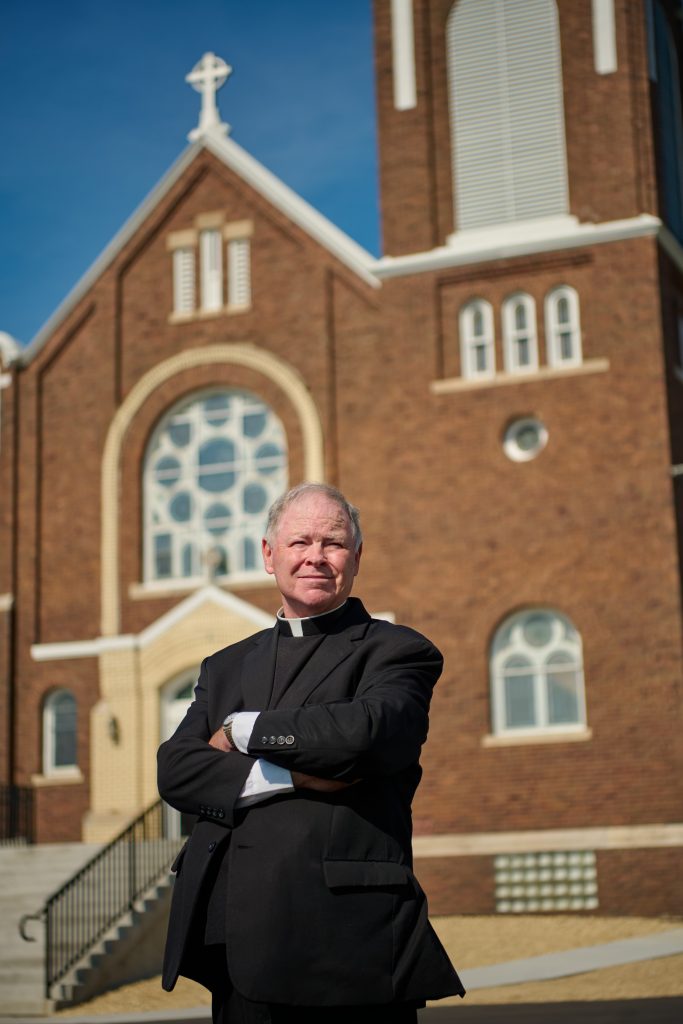
When I asked Monsignor Gorman how he received the call to the priesthood, he pointed to his first experience as an altar server.
In 1969, when he was a freshman in high school, he was among the first lay readers in his parish. Although he wasn’t ready to leave home and attend a high school seminary at that time, after he finished high school, his parish priest contacted the vocational director, who came out to the farm for supper. “That was basically it,” he explained.
A Lifetime of Priestly Service
Monsignor Gorman attended St. Francis de Sales College Seminary in Milwaukee from 1972 to 1976. After that, he attended St. Paul Seminary in Minnesota, where he studied theology from 1976 to 1980, the year he was ordained. After ordination, he was assigned to Blessed Sacrament Parish in La Crosse for four years as an associate pastor.
Soon after Bishop John Paul was installed, he asked Monsignor Gorman to travel to Rome and study Canon Law. He then attended the Pontifical Gregorian University from 1984 to 1986. In those days, classes were taught entirely in Latin, presenting a steep learning curve for incoming students. However, Monsignor Gorman successfully completed the program, and when he returned to La Crosse, the bishop asked him to apply his new skills in the diocesan marriage tribunal.
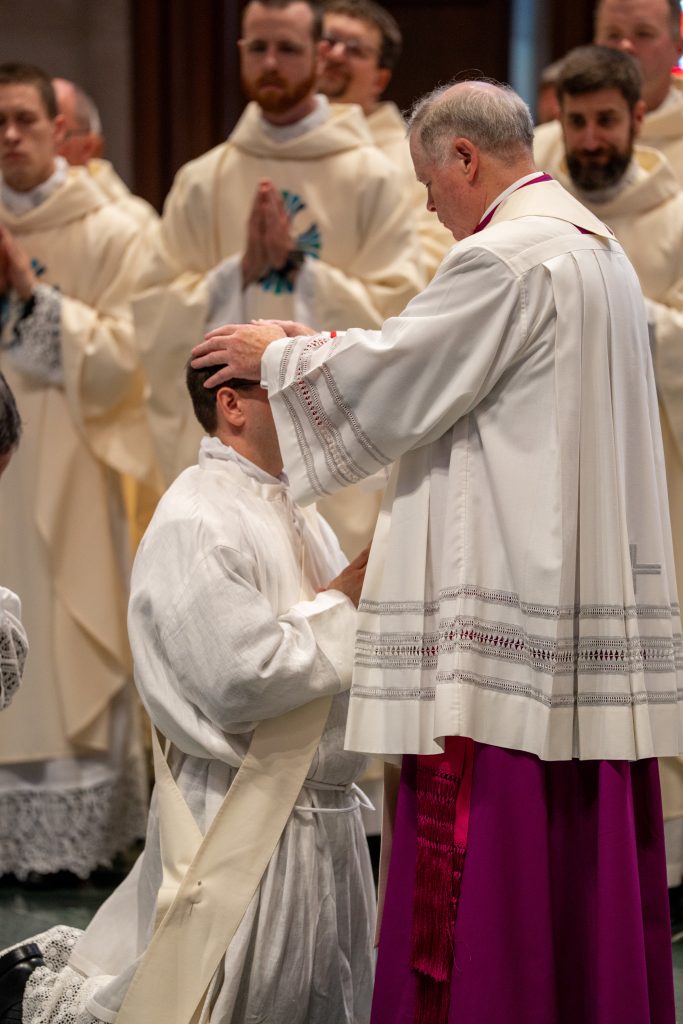
During that time, he also served as chaplain to the sisters who taught at Aquinas High School, rising every morning to celebrate Mass for them at 6:30 a.m.
Monsignor Gorman made many unique contributions to the administration of the diocese during his 45-year career. He was appointed secretary to the bishop and master of ceremonies in 1986, serving in that role for 15 years under Bishops John Paul and Raymond Burke. He first served as the diocesan chancellor from 1988 to 1997 and then as the moderator of the curia twice, first from 1997 to 2001 and again from 2011 to 2016. From 2011 until 2024, he was one of three vicars general, a role that allowed him to assist the bishop with confirmations.
On Oct. 31, 2012, he was appointed prelate of honor to His Holiness Benedict XVI, which allowed him to use the title “Monsignor” and to wear the prelatial cassock.
Monsignor Gorman’s pastoral assignments included St. John the Baptist, Marshfield (six weeks); Blessed Sacrament, La Crosse; St. Leo the Great, West Salem, and St. Mary, Bangor; Annunciation of the Blessed Virgin Mary Viroqua; rector of St. Joseph the Workman Cathedral, La Crosse; St. Joseph, St. Joseph Ridge; and again at Viroqua with St. Mary, Coon Valley. Most recently, Monsignor Gorman was pastor of St. Charles Borromeo in Chippewa Falls and St. Peter’s in Tilden. Sadly, for all the parishioners who have come to know and love him, this was his last assignment as an active priest. He was granted senior priest status effective July 1 of this year.
Machines, Threshing and the Liturgy
Monsignor Gorman is a man who clearly loves Christ, his faith and his Church. Interestingly, what truly fascinates and piques his curiosity is machinery. The more complicated, the better. He mentioned that he is especially interested in old machinery. He loves to see how the different parts work together in complicated ways to make something interesting and useful happen.
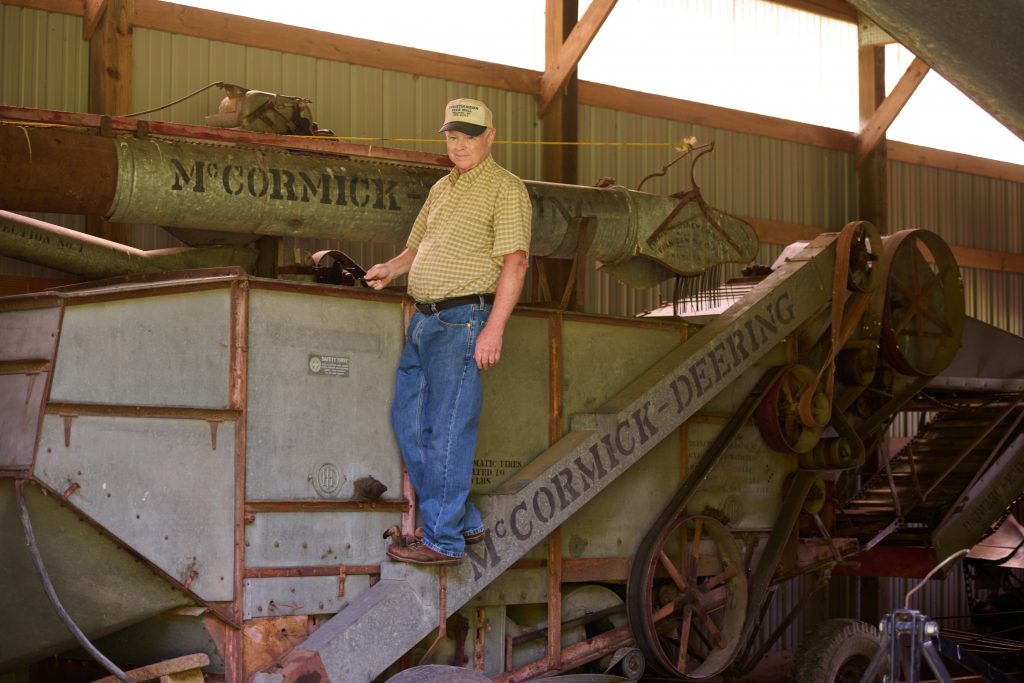
He thoroughly enjoyed his many years as master of ceremonies. Monsignor Gorman told me that the ceremony of the Mass was always an interest of his. “I had a certain affinity for machinery,” Monsignor Gorman reflected, “because, through it, I understood how the liturgy worked—how things should unfold, what each minister was called to do. I enjoyed reading the rubrics, those sacred directives in the Missal, that guide the celebration of the Mass.”
Ever since his boyhood, Monsignor Gorman’s interests have extended to farm machines as well—most famously, to the thresher. Anyone familiar with Monsignor Gorman knows that Threshing Day is an annual event at the Gorman family farm. Every year around Labor Day, friends and family gather to watch or help feed sheaves of grain (usually oats) into his threshing machine.
The maze of exposed belts and pulleys, while dangerous, is fascinating to watch in operation. The thresher separates the grain from the straw. The grain is collected, and the straw is baled into straw for animal bedding. The entire process takes about three hours and usually draws a crowd of over 100 spectators and participants. Some are there to work, some are there to see a live threshing for the first time and some are there to remember how things used to be done in the good old days before combine harvesters took over the job.
Prior to the main event, a potluck gathering is held at St. Philip Parish. Monsignor and his family provide the beef sandwiches and the buns, while the guests bring a dish to pass. He fondly recalls Threshing Day in the 1960s when he got to enjoy the first apple pie of the season. They would set out a basin for the men to wash their hands, and by the time everyone had gone through the line, the water would turn dark grey.
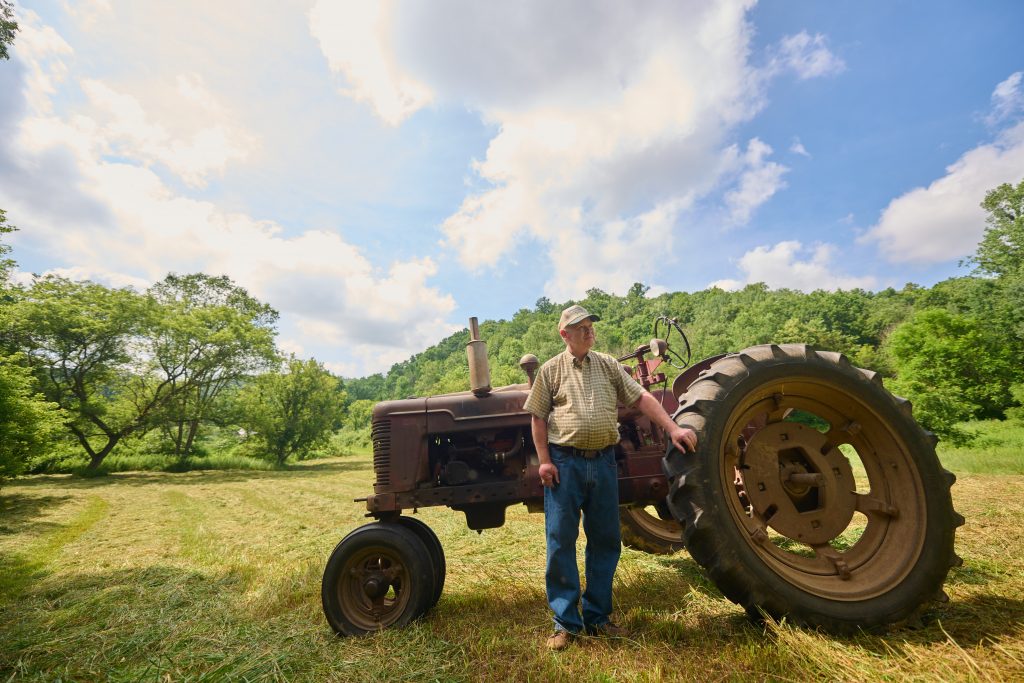
While he was the pastor of St. Charles Borromeo Parish, Monsignor took a vacation every year for the entire month of July. As a priest, of course, he needed to drive the two and a half hours back to Chippewa Falls on the weekends for the Sunday Masses, but during the week, he spent his time at the farm preparing for the threshing. He had to arrange with a farmer to set aside a few acres to be harvested. Using his antique binder to cut and bind the grain into sheaves, a crew of volunteers stands them upright in shocks to cure. Later, they would return to gather the sheaves into a wagon using pitchforks and store them in a barn near the thresher. Monsignor Gorman paused at this moment to mention that there is a sheaf depicted in the Diocese of La Crosse’s coat of arms.
For threshing, he uses a 1948 McCormick-Deering thresher that is belt-powered by a 1952 Allis-Chalmers WD tractor. In the early days, a thresher was too expensive to own for the exclusive use of a single farm, so whoever went to the trouble of investing in one would travel from farm to farm, renting it out at the harvest. Monsignor’s great-uncle was a thresher who operated five threshing machines with five crews during their heyday.
When his sons decided to tear down an old shed housing an old Belle City thresher, they called it his and he pulled it back to his farm with two wheels still on bare rims. Not only did he get it working again, but he later fixed up a McCormick-Deering thresher by salvaging parts from a similar model abandoned in the woods on Grandad’s Bluff in La Crosse. (Both machines had sat idle for about 25 years.) Today, he has a machine shed on the farm to house his two threshers, his binder and his Allis-Chalmers tractor. Despite their age, he keeps his antiques in working condition.
Over the decades, the annual threshing bees at the Gorman farm have been featured in numerous journals and newspapers, including the “Chicago Catholic,” “Our Sunday Visitor,” The “Richland Observer,” “Farm Collector Magazine” and the “Milwaukee Journal Sentinel.” The emphasis is always on the threshing machines rather than the man behind them. (One confused journalist noted that some people were referring to Mike Gorman as “Father Gorman” because of his day job in the Chancery!) But for the faithful of the Diocese of La Crosse, Monsignor Gorman is more than just a collector of antique farm equipment. He is a larger-than-life figure, beloved for his many contributions to the Church and to the Catholic community of southwestern Wisconsin.
Returning Home
Priests never really retire; instead, they ease into the role of “senior priest.” Like all senior priests who are healthy enough to travel, Monsignor Gorman will be asked to celebrate Masses and otherwise assist the active priests around the diocese. He has offered to Father Alan Guanella, the new judicial vicar, to put his education and talents to use as defender of the bond. He looks forward to spending more time on the beloved farm where he grew up, in the house where he and his family spent so many happy years together.
Today, the farm animals are gone. The tillable acreage is rented out. The renters grow corn and soybeans rather than tobacco, and they harvest their crops with combine harvesters rather than binders and threshers. Even as this change surrounds him, Monsignor Gorman plans to continue the steadfast tradition of Threshing Day as long as God allows.
There may come a time when he will have to pass this tradition on to someone else, but people will remember him for more than just his love of threshing. His family, his friends, his brother priests, his students and those who knew him as their pastor will always remember Monsignor Michael Gorman as a faithful servant of God and a dedicated servant of the Diocese of La Crosse.
Story by Dan Rislove
Published in the Fall 2025 edition of Catholic Life Magazine

